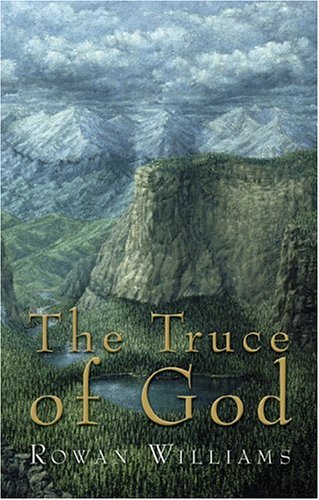 The legacy of lost discourse remains with us in a post-Cold War world, perhaps captured in a common mistake my students make when they write "pacifism" as "passive-ism". Peace means maintaining the status quo, refusing to act with a decisiveness that challenges the grain of society, or that places the self at risk. And so Williams writes of “a miserable link between militarized politics, consumer society, the corruption and decline of the arts, and the cheapening and trivializing of language—in politics, journalism, advertising, and worship.” (55)
The legacy of lost discourse remains with us in a post-Cold War world, perhaps captured in a common mistake my students make when they write "pacifism" as "passive-ism". Peace means maintaining the status quo, refusing to act with a decisiveness that challenges the grain of society, or that places the self at risk. And so Williams writes of “a miserable link between militarized politics, consumer society, the corruption and decline of the arts, and the cheapening and trivializing of language—in politics, journalism, advertising, and worship.” (55)Against peace as "intensified withdrawal", Williams offers a surprising counter: the cloister. Not the romanticized cloister of popular fiction and singing nuns, but rather the cloister that “abandons privacy for a solitude which forces people to confront their fear and evasiveness and so equips them for involvement by a stripping down of the will.… having shed the impulses to self-protection and self-gratification which limit and distort its horizon.” (63) Williams recounts a story from Dom Hubert van Zeller: “a North Welsh convent where the garden gate had at some point in its chequered career been reversed—so that the side facing inwards now read ‘Private’ in large letters. The cloister was being warned to keep its distance from the privacy of the world.” (63) The point is that the world is a place of “isolated existence, fear of facing the cost of decision and involvement—haunted by the fantasy of ‘peace’.
The church faces its own temptations to withdrawal. Even the self-consciously prophetic church, can become “an impregnable castle” when its social engagement manifests a fondness for generalized denunciations”, launching missives from a comfortable distance (64). It will take distance from the world, but from “the tight huddle of fear, where people cling together to feed each other’s fantasies”, from “the decayed and corrupting language of self-justifying and self-perpetuating cliques”, and from “the manipulations and distortions of a self incapable of opening up to others.” (64)
Returning to the cloister, the three classic monastic practices: solitude, silence, and contemplation are necessary to create space for new patterns of community, speech, and action (65). This is indeed a kind of death, but one that “redraws the boundaries” of what a genuinely human life is: a life conformed to the pattern revealed in Jesus (65).
I’m put in mind of two rather extreme figures: Paul Tillich, who once said that the best thing the church of his day [1950s America] could do would be to renounce speech for a time, and Sting, who penned the immortal lines
poets, priests and politicians / have words to thank for their positions / words that scream for your submission / no-one’s jamming their transmission / when their eloquence escapes you / their logic ties you up and rapes you / da do do do, de da da da / is all I want to say to you.OK, so repeating nonsense syllables to the powers that be is not exactly responsible protest politics, and the line
[words] are only cheques I’ve left unsigned / from the banks of chaos in my mindis a little two nihlistic for my tastes. (Williams has an interesting paragraph in which he, via Thomas Merton, speculates on the pervasiveness of “speaking in tongues” amongst conservatives at times of social crisis that may well echo Sting’s sentiments here (54–55).) What is one to do “when language takes a holiday”? Perhaps silence is better than speaking. And silence can be its own eloquent protest—I’m thinking of the refusal of Bishop Barnabas Legkanyane at the Truth and Reconciliation Commission in 1997—interrupting discourses that are so “word heavy” that they risk falling into the kind of ideology Williams warns against.
Silence as a way of non-violent protest, and as clearing space for the renewal of discourse, is an interesting idea. What kind of liturgical shape would such silence take? How would we worship without words? And what then would be the shape of "the peace of Christ" that we'd exchange? For that, we have to wait for the next chapter, entitled "Not as the World Gives."


